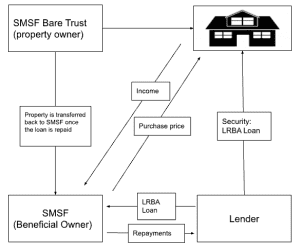
In the dynamic world of business, one term that is often talked about, but is not clearly understood is “working capital.”
It’s not just a buzzword but a critical factor that can determine the health and success of a business. In this article, we’ll explain the concept of business working capital, its significance and how it impacts the overall operations of an enterprise.
What is Working Capital?
There is a saying that “Cash is King”. Similarly, working capital is the lifeblood that keeps a business operational, allowing it to meet its short-term financial obligations and fund day-to-day operations. In simpler terms, it’s the difference between a company’s current assets and its current liabilities.
Current assets include cash, accounts receivable, and inventory, while current liabilities consist of accounts payable, short-term loans, and other obligations that need to be settled within a year.
The Significance of Working Capital:
Working capital is the engine that powers the basic functions of a business, including purchasing raw materials, paying salaries, and covering operational expenses. Having an optimal level of working capital is crucial for several reasons:
- Smooth Operations: Adequate working capital ensures that a business can continue its operations without disruptions. It allows a company to maintain inventory levels, fulfil customer orders, and pay suppliers promptly.
- Flexibility: Businesses with healthy working capital are better equipped to seize opportunities and weather unexpected challenges. Whether it’s investing in expansion, capitalising on market trends, or navigating economic downturns, having ample working capital provides the flexibility needed to make strategic decisions.
- Credibility: A company’s working capital position is often an indicator of its financial health. Lenders, investors, and suppliers use this metric to assess a business’s ability to honour its commitments. A positive working capital portrays a well-managed company that can meet its obligations on time.
- Risk Mitigation: In times of economic uncertainty or seasonal fluctuations, having a buffer of working capital (or access to adequate working capital loans) can act as a cushion against revenue shortfalls. It reduces the risk of defaulting on payments and maintains stability in the face of adversity.
Calculating Working Capital:
The formula for calculating working capital is simple:
Working Capital = Current Assets minus Current Liabilities
A positive working capital indicates that a company has more current assets than current liabilities, which is generally considered a healthy position. Conversely, a negative working capital could be a sign of financial distress, as it suggests that short-term obligations exceed available resources.
Strategies to Manage Working Capital:
Effective working capital management involves striking a balance between optimising liquidity and minimising excess tied-up capital. Here are some strategies to consider:
- Inventory Management: Keeping inventory levels lean reduces the amount of capital locked up in unsold products. Just-in-time inventory systems and data-driven forecasting can help achieve this.
- Accounts Receivable: Shorten the time it takes to collect payments from customers. Offer discounts for early payments and establish clear credit policies.
- Accounts Payable: Negotiate favourable terms with suppliers without straining relationships. Extending payment terms without compromising the supply chain can improve cash flow.
- Cash Flow Forecasting: Accurate cash flow projections help anticipate periods of surplus or deficit in working capital, enabling proactive planning.
- Optimised Pricing: Ensure that your product or service pricing covers both operational costs and a portion of working capital requirements.
In Conclusion:
Working capital is the lifeblood of any business, providing the necessary financial resources to keep the business running smoothly. Its management is a delicate balancing act that requires a deep understanding of the company’s cash flow dynamics, market conditions, and strategic goals. By prioritising working capital management, businesses can position themselves for resilience, growth, and long-term success in a dynamic and competitive environment.
We are passionate about helping businesses to survive and thrive and we specialise in business working capital. We’ve helped many businesses to free-up cash for growth. We would be delighted to have a conversation about your business, why not give us a call?
